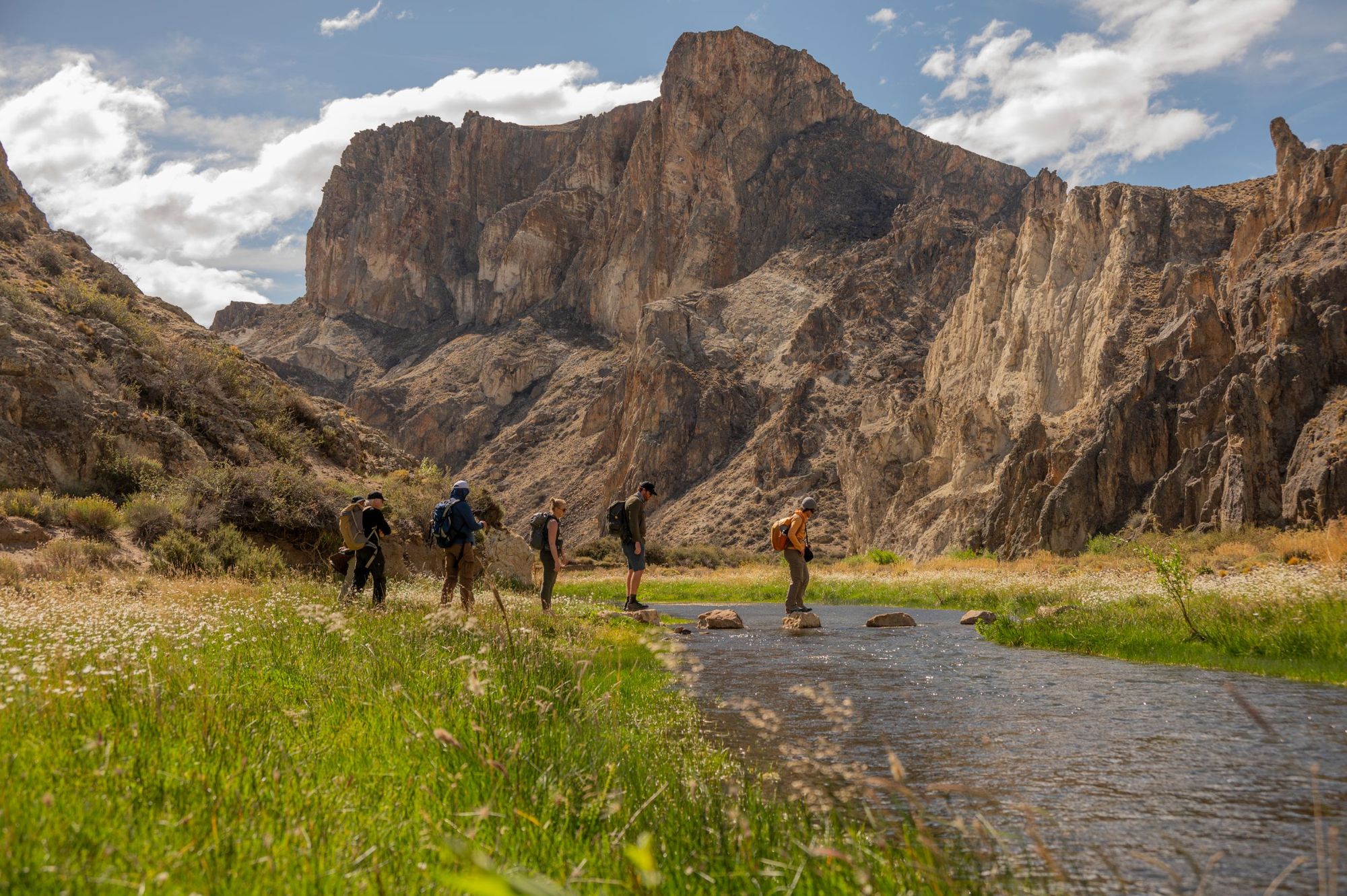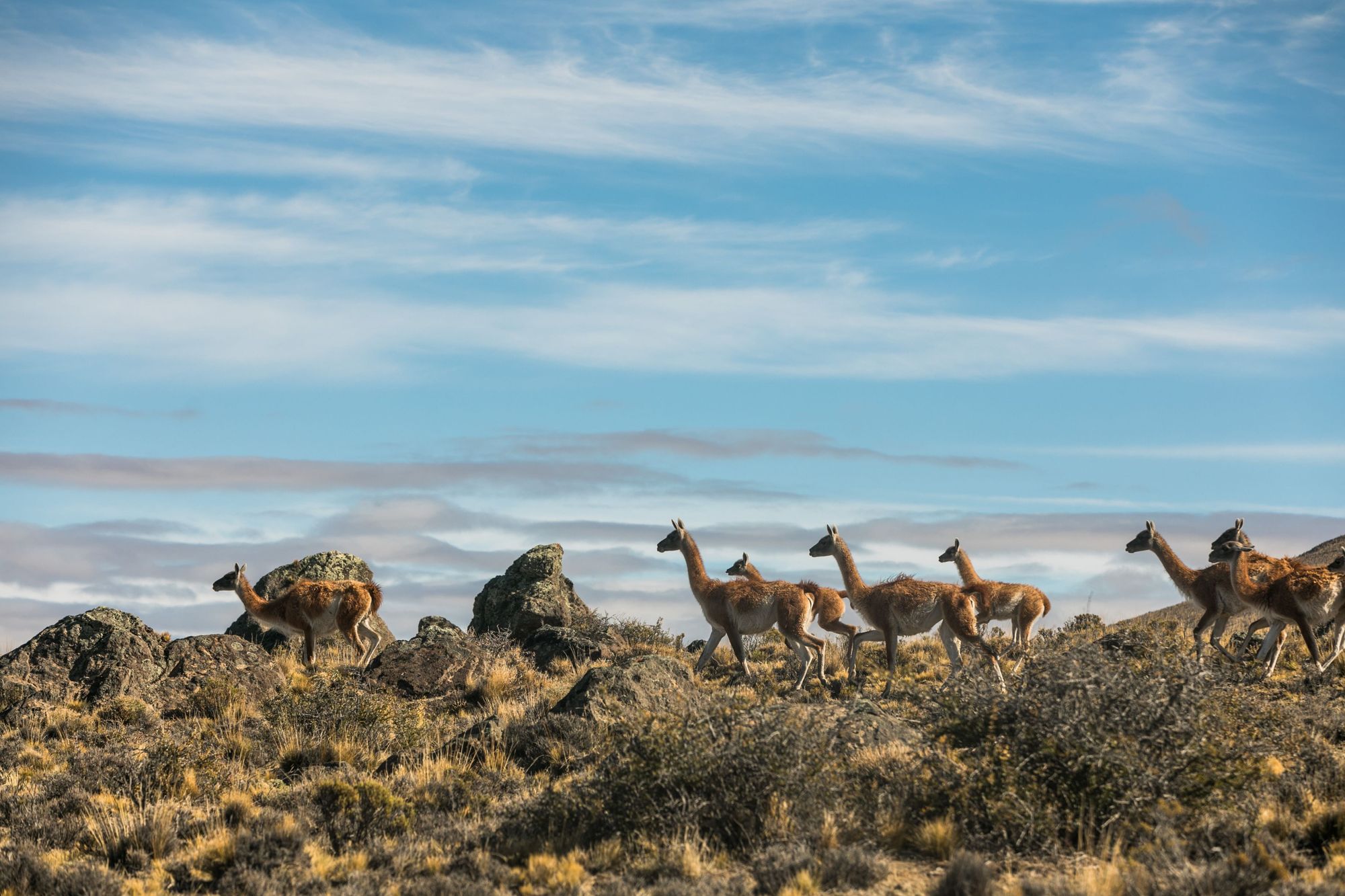
A pair of Andean condors, the world's largest bird of prey, circle as we stand over the carcass of a dead guanaco, a goofy-faced ancestor of the llama, on the dusty steppe floor of Parque Patagonia Argentina. The condors are easy to identify, distinct from the black-chested buzzard-eagles which also inhabit the area by the striking white stripe which crosses their three-metre, black wingspan, visible in full as they glide calmly through the cloudless skies of Patagonian summer.
The condors are scavengers, looking for what we’ve just found - a puma kill.
Sadly for the birds, the puma that killed this guanaco covered the remainder of its feast beneath sticks before leaving; the feline equivalent of hiding a half-eaten sandwich at the back of the fridge, and hoping your housemate won’t nick it. “This carcass is around a day old,” says Facundo Epul, my guide for the day, and the first person in Argentina offering puma-trekking tours.
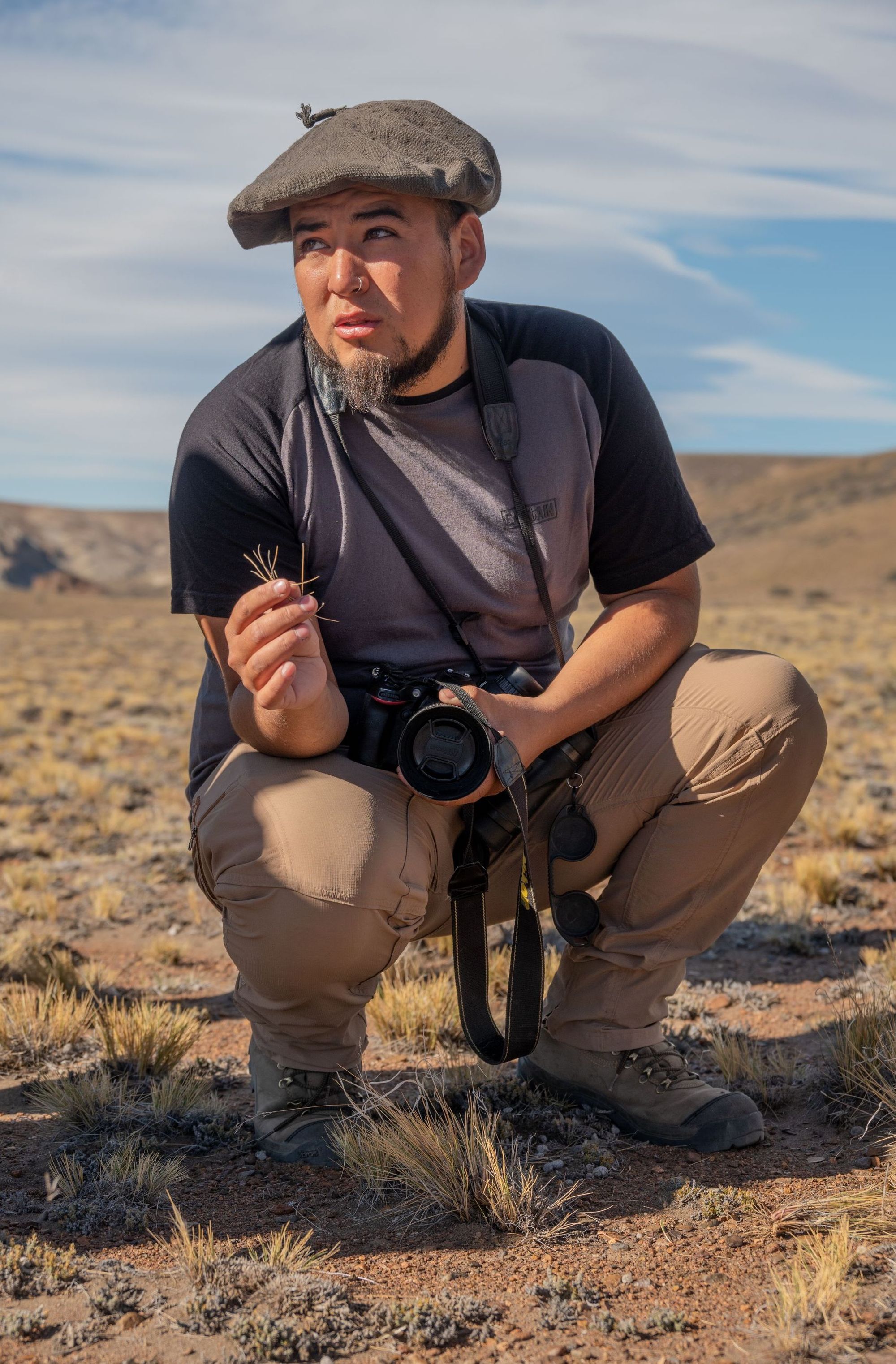
Epul leads us through the steppe, channelling his inner Aragorn as he picks up the trail of the pumas from old paw prints. This is a landscape that belies the stereotypes of Patagonia. The national park is a largely dry, dusty landscape. The steppe is punctuated by spiky balls of bluegrass and sprawls extensively, only giving way to volcanic plateaus or colossal canyons - the geological wonders of this place, which carve pure beauty out of the cracks in the semi-arid landscape.
We follow Facundo over a hill and along the edge of a canyon, before we finally catch sight of a puma, hiding from the heat in a cave. These big cats are ambush predators, and can reach a top speed of 50mph. But this one has no intention of doing so any time soon. We stare at the puma in awe. It stares back and yawns.
The vision here is to connect the park to Parque Patagonia on the Chilean side.
Facundo Epul is 27 years old, and hails from Perito Moreno, a small mining town just outside the national park. Most people Epul’s age are forced to migrate to the city if they don’t want to work as a rancher or a gold miner, and Facundo himself fits that bill, having moved north to study in Córdoba before returning home to Parque Patagonia when new opportunities arose in tourism.
“The Fundación Rewilding Argentina was running a biodiversity course,” he tells me, on the bumpy drive back to La Posta del Toldos, an old ranch now converted into a comfy ecolodge. “So I did the course, and I learned about pumas - how they move and what they prefer to catch. I didn’t want to work on a ranch, so when I moved, I never thought I’d come back. But I love this area.”
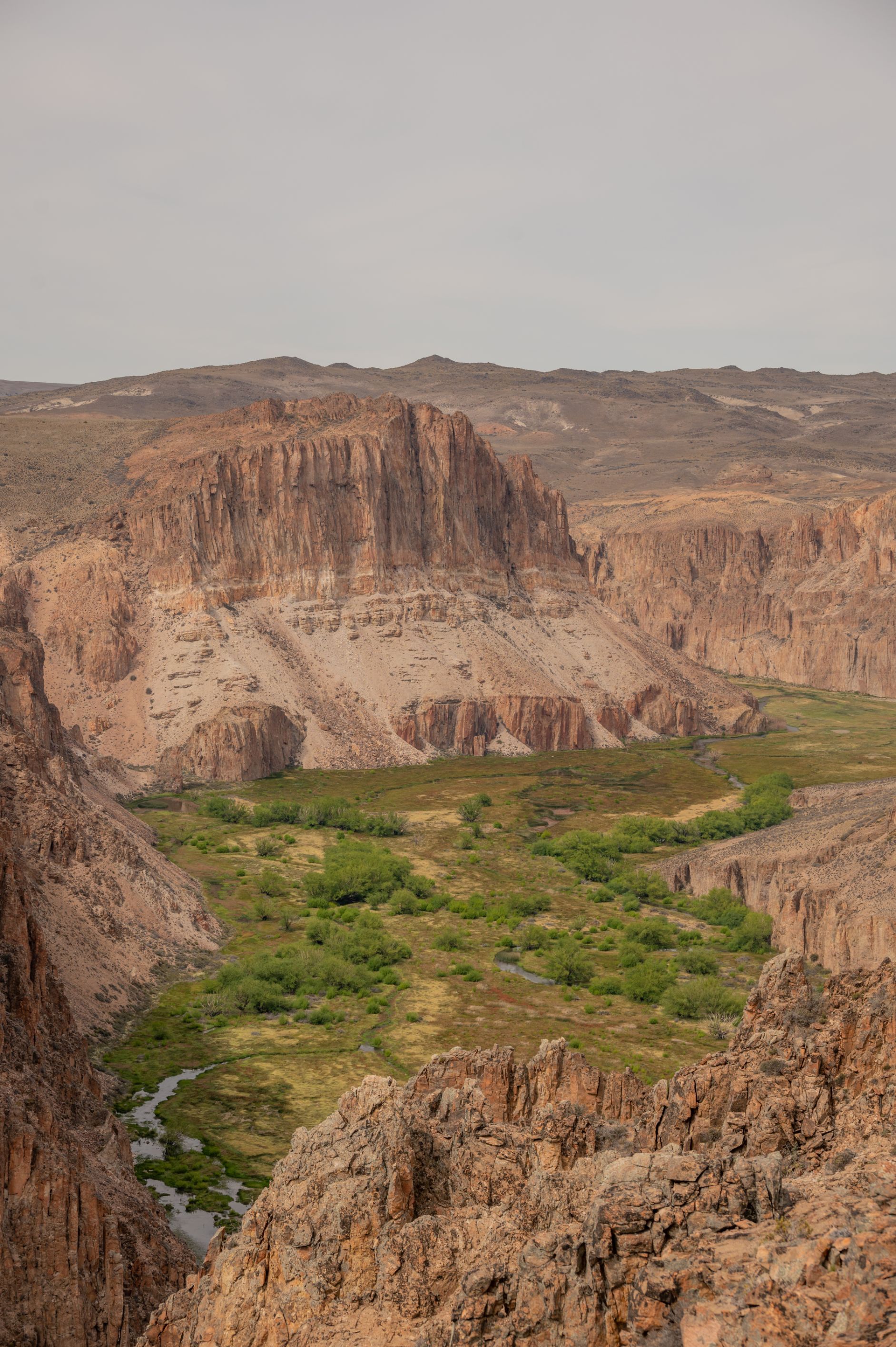
Ranching is low pay for hard work, Facundo explains. Whereas now, he owns his own company, El Choique Guia.
Rewilding Argentina have been working here since around 2007, when they joined a campaign to help protect a nesting site of the endangered hooded grebe from development by gold miners. The foundation has since been buying up abandoned or unwanted farmland in the region, restoring it and then donating it back to the state, a process which in 2014 created the (Argentinian) Patagonia National Park - the borders of which bulge with each new donation.
“The vision here is to connect the park to Parque Patagonia on the Chilean side,” says Sofia Heinonen, the CEO of Rewilding Argentina.
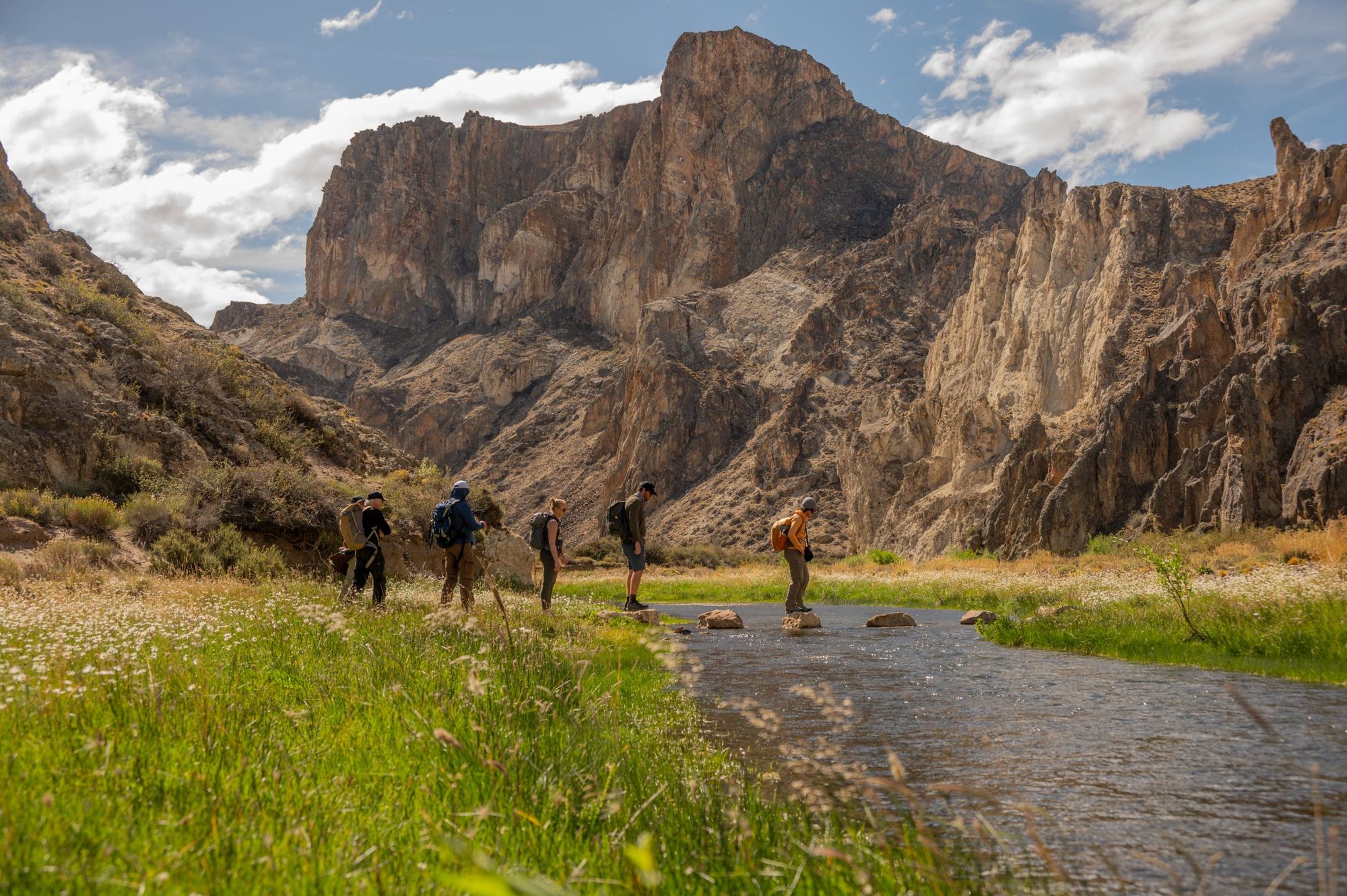
Within the realms of the park, animals are protected from hunters, and so pumas, guanacos, condors and lesser rhea (an ostrich-type bird, which kicks up dust as it sprints around) are able to thrive. It’s tough to turn without seeing a herd guanaco or lesser rhea, two species which are widespread in the park.
Crucial to the long-term vision of the project, though, is having the local community on side.
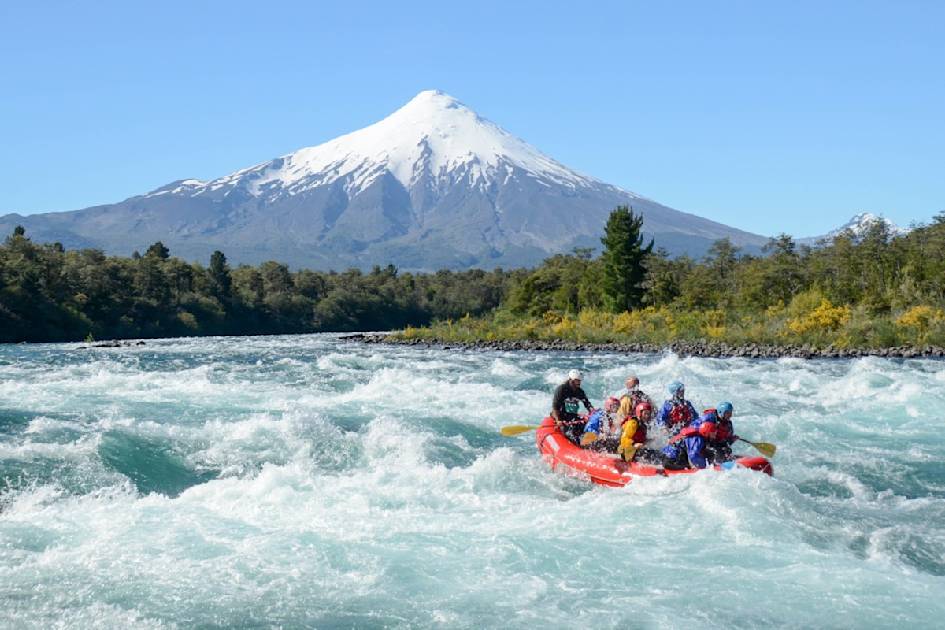
Pumas have historically been villainised by ranchers for fears the animals will snatch livestock - so there has been opposition to protected areas. Poisonous traps are laid which also kill armadillos or foxes, and some ranchers pay leoneros to kill the cats. But relationships have improved since Rewilding Argentina provided ranchers with sheep dogs, and produced a study showing pumas massively prioritise guanacos and lesser rhea for food, over sheep.
“We’re aiming to change a culture,” says Sofia. “But we’re on the final frontier. People who move to these wild places are looking for jobs - and they need them.”
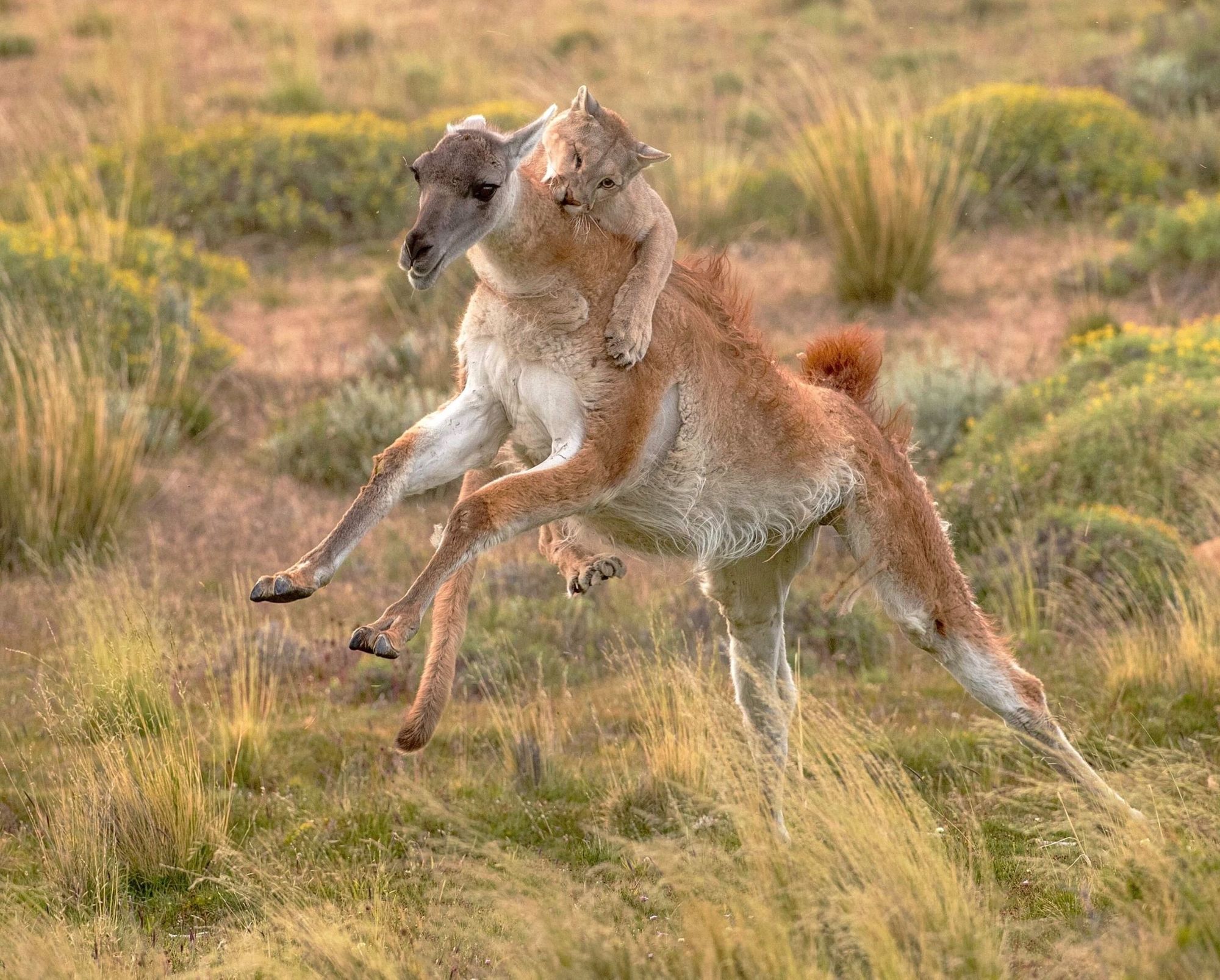
The park is indeed remote, 1,300 miles south of Buenos Aires, and five-hours drive away from the nearest city, Comodoro Rivadavia on the Atlantic coast.
“There isn’t a pride in the land to appeal to here. It’s about money, and supporting families - so we need to show that tourism here can provide a high income, and create jobs. Argentina is in an economic crisis, so instead of the crisis of extinction, we speak of the economy of nature. Usually we put the wildlife at the front. Here we have to start by talking about economics.”
The Freyja Foundation, a partner of Rewilding Argentina, help fund all rewilding activity and infrastructure in the park. That includes building a 40km network of hiking trails in the park, taking visitors to the rainbow-coloured rocks of Tierra de Colores, and to the vibrant greenery of the Pinturas Canyon, beneath the UNESCO-protected Cave of the Hands, a site of 9,300-year-old cave paintings. Campsites and lodges have also brought new opportunities.
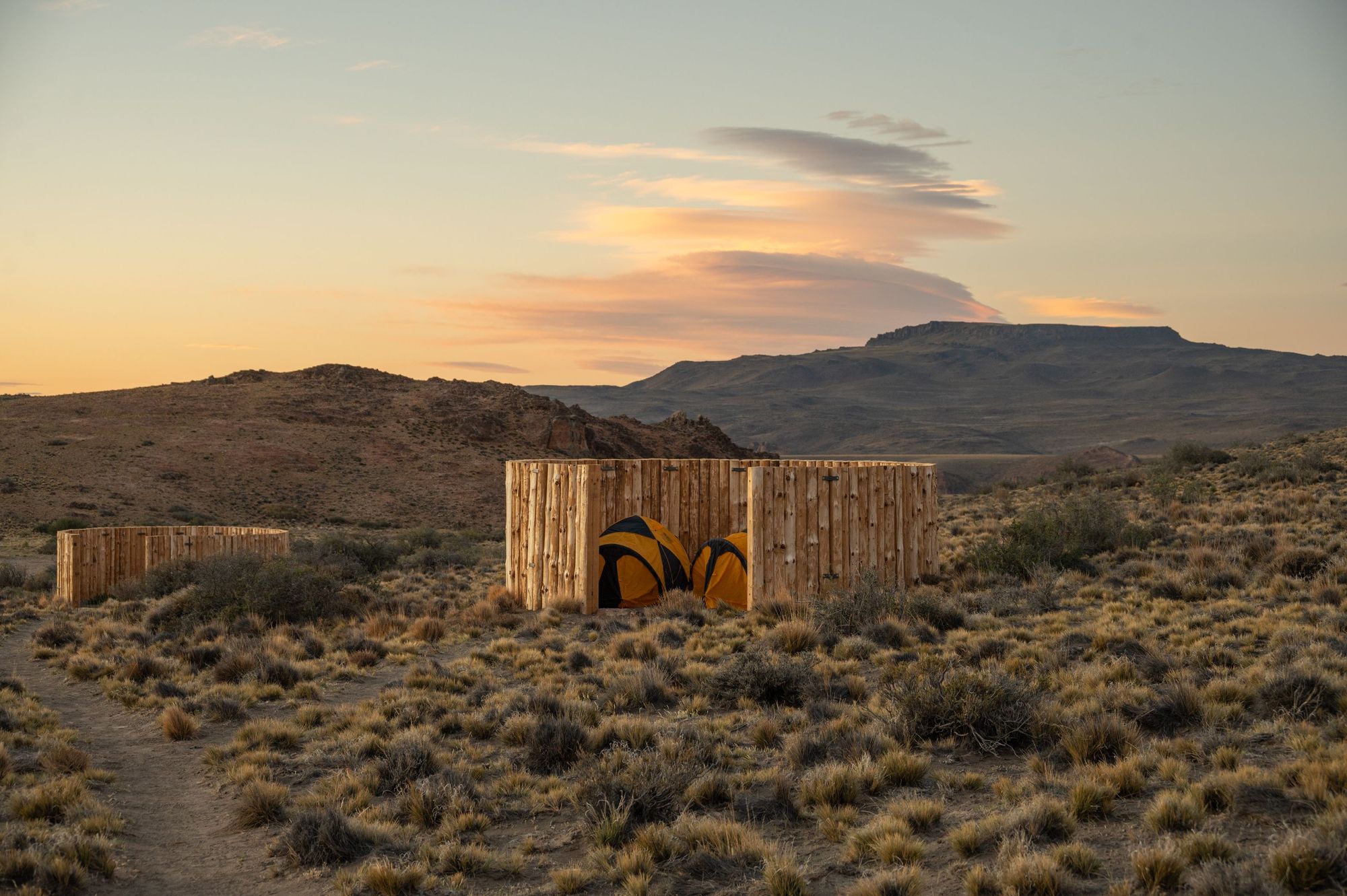
Facundo is the son of a rancher, and part of a notable shift in the region - from making a living exploiting the land, to making a living celebrating it. “It’s an important moment,” he says, as Argentinian folk music crackles out the radio of his pick up truck, and a family of lesser rhea sprint off along the steppe.
A full 600 miles northwest in Puerto Varas, near the lush Llanquihue wetlands of Chilean Patagonia, Raffaele Di Biase runs tour operator Birds Chile, with the slogan “travel for rewilding”. Di Biase guides adventures and wildlife-watching excursions across the country, including here, through the scenic waters of the Petrohue River and the sunken forests of the River Maullín.
Raffaele is an experienced guide, and the author of several field guides on the flora and fauna of Patagonia. “We say rewilding, because conservation is no longer good enough,” he tells me.
The 37,500 population of Puerto Varas is nine times that of Perito Moreno. But in this vibrant community, too, Di Biase is showing tourism can be a force for good.
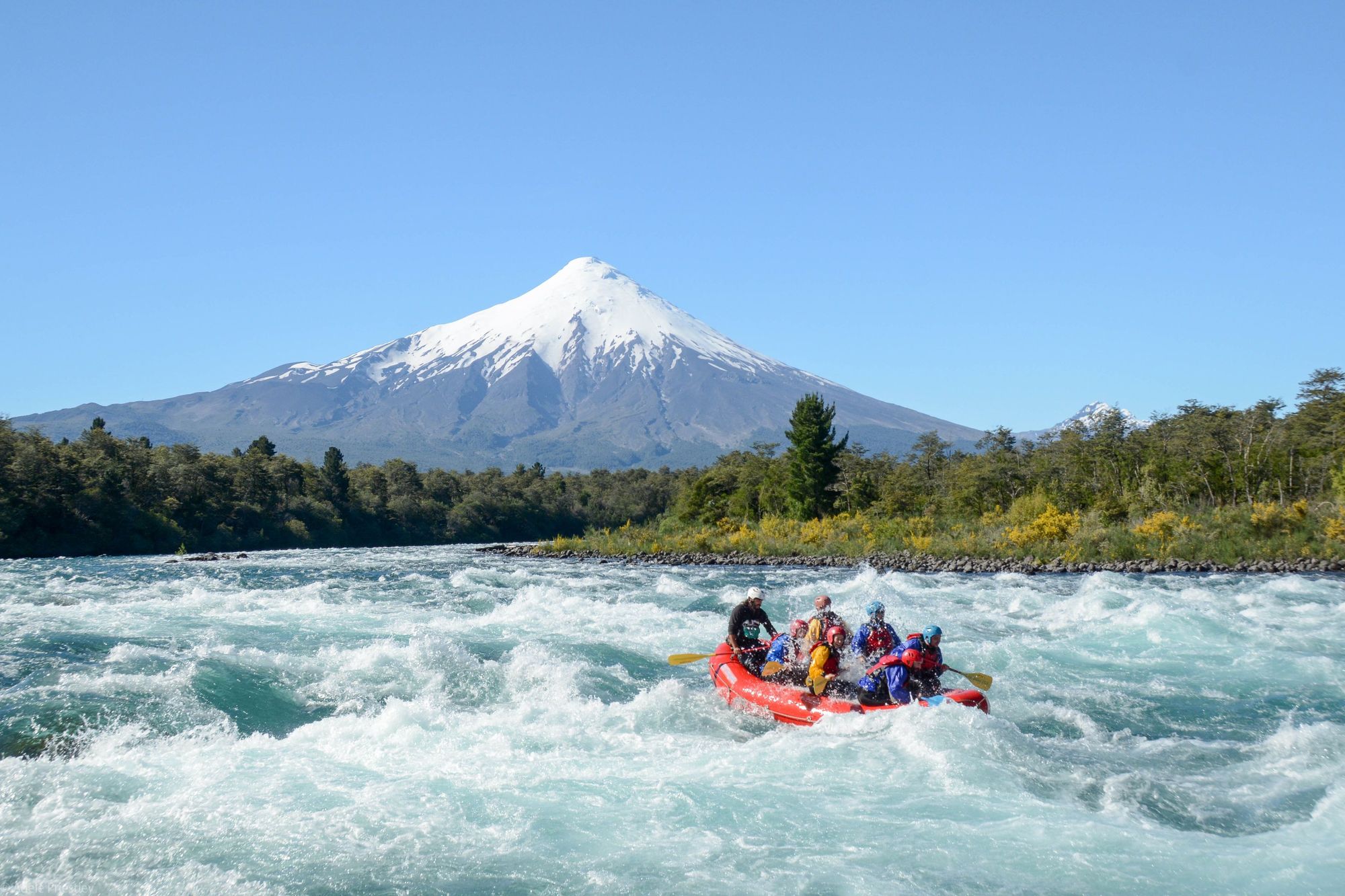
“Travel must be more than just selling trips,” he says. “Here we have glaciers, volcanoes, temperate rainforests, mammals, birds, rivers, lakes. Our office is there, in the outdoors, but we have a big responsibility because of that. I believe travel is the economic activity that can have the biggest impact in terms of rewilding, and in terms of giving back to locals. And of course, it can be fun while we do it.”
Birds Chile are the only B Corp-certified tour operator in Chile, and work with NGOs across the country - also donating a percentage of sales to those NGOs - to integrate citizen science into their itineraries.
“This isn’t voluntourism,” says Di Biase. “We run adventures which also involve an element of participation. It guarantees our experiences are authentic - not just a show for travellers, but a moment of direct and real contact with these local communities.”

In the Atacama Desert, further north, Birds Chile work with the Andean Cat Alliance, an organisation aiming to conserve the most endangered feline in all of the Americas. “A field scientist will show us how they install the camera traps, and then we have lunch with the local indigenous people, who make handicrafts inspired by the cat”. Further south, the company works with Fundación Rewilding Chile, the Chilean equivalent of Heinonen’s Argentine organisation.
Creating these linkages between sectors is crucial in minimising tourism leakage - the money from travel that leaks out to external economies - and establishing circular, green economies that support thriving natural environments.
Here in the Llanquihue wetlands in northern Patagonia, Birds Chile work with Legado Chile to protect the River Maullín. The river is fed by Lake Llanquihue, Chile’s second largest lake, which is backdropped by the snow-capped peak of 2,652m Osorno volcano. Di Biase also sits on Legado Chile’s Board of Directors.
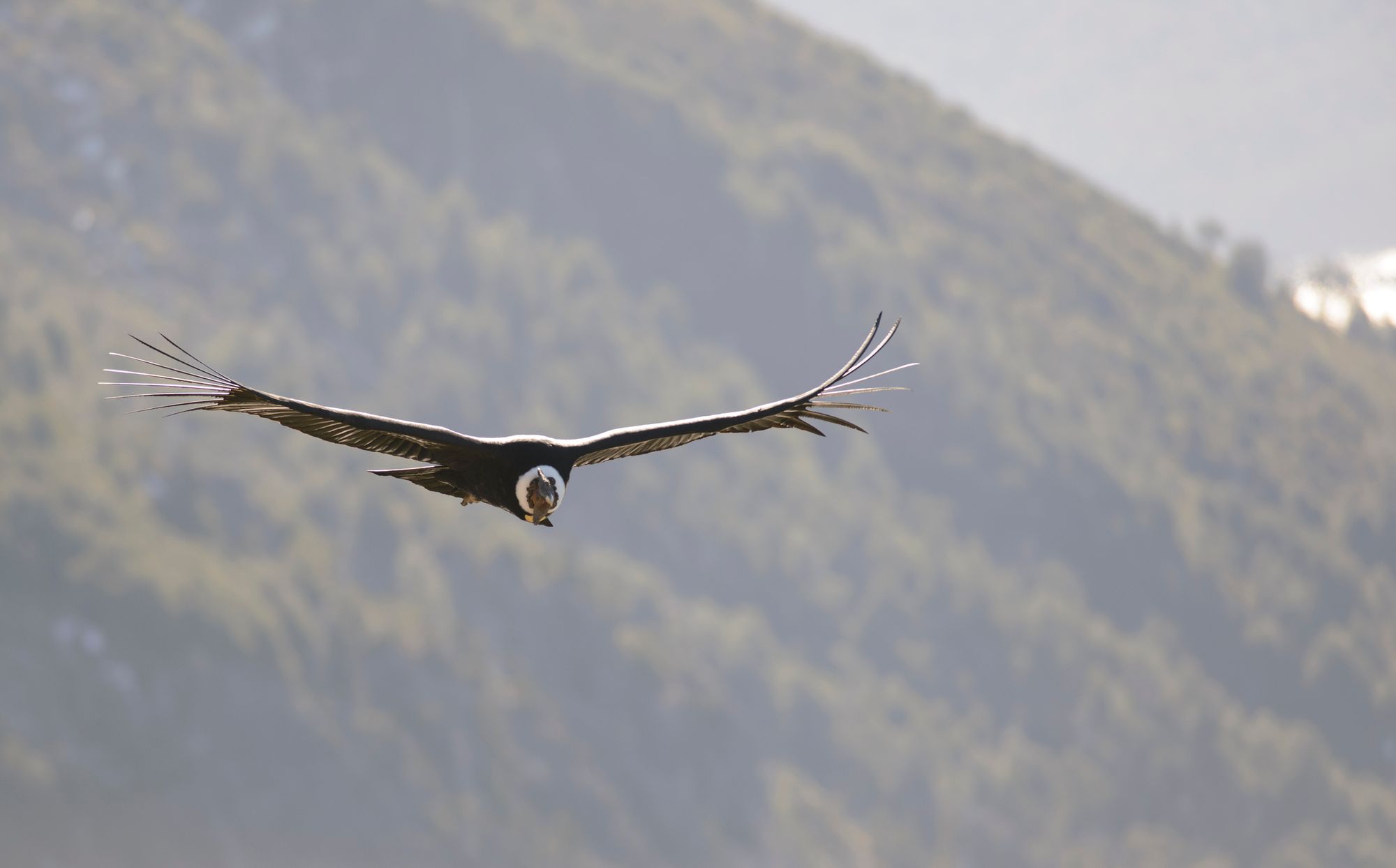
“The region has one of the highest densities of wetlands in Chile,” says Di Biase. “And the River Maullín is one of the most biodiverse in Chile. It’s the only river where you can see the sunken forests, with tree species that grow underwater."
Paddling through the tranquil greenery of the forests feels like paddling through a flooded world.
“We have more than 200 bird species here,” says Raffaele, including flamingos, imperial cormorants and black-necked and coscoroba swans. There are also dolphins and an endangered species of river otter. “It is key in terms of biodiversity - but also, there is a cultural impact too. The river has a lot of importance in the cosmovisión of the indigenous people.”
Tourism can give opportunities to areas that are not in the hotspots of economic activity in their countries.
The main threat to the area is development.
“Cities are growing, and people want to move out to nature, but that also means that areas that were well preserved are now on the radar of real estate developers,” Raffael says. “You would have to fill the wetland to build on it.”
Real estate is a lucrative market, “so we have to emphasise to the community that preserving the wetlands is not just good for nature, it’s also good for business. too. The planet needs these places, and they can also provide an income.
“Tourism can give opportunities to areas that are not in the hotspots of economic activity in their countries - and it can make local people the guardians of a place.”
As well as kayaking on the Maullín, Di Biase’s guests join scientists from Legado Chile for activities from setting up camera traps to taking wildlife censuses. “It’s real work that the researchers are doing in that ecosystem - and then we go to a microbrewery and have some beers and a barbecue,” he laughs.
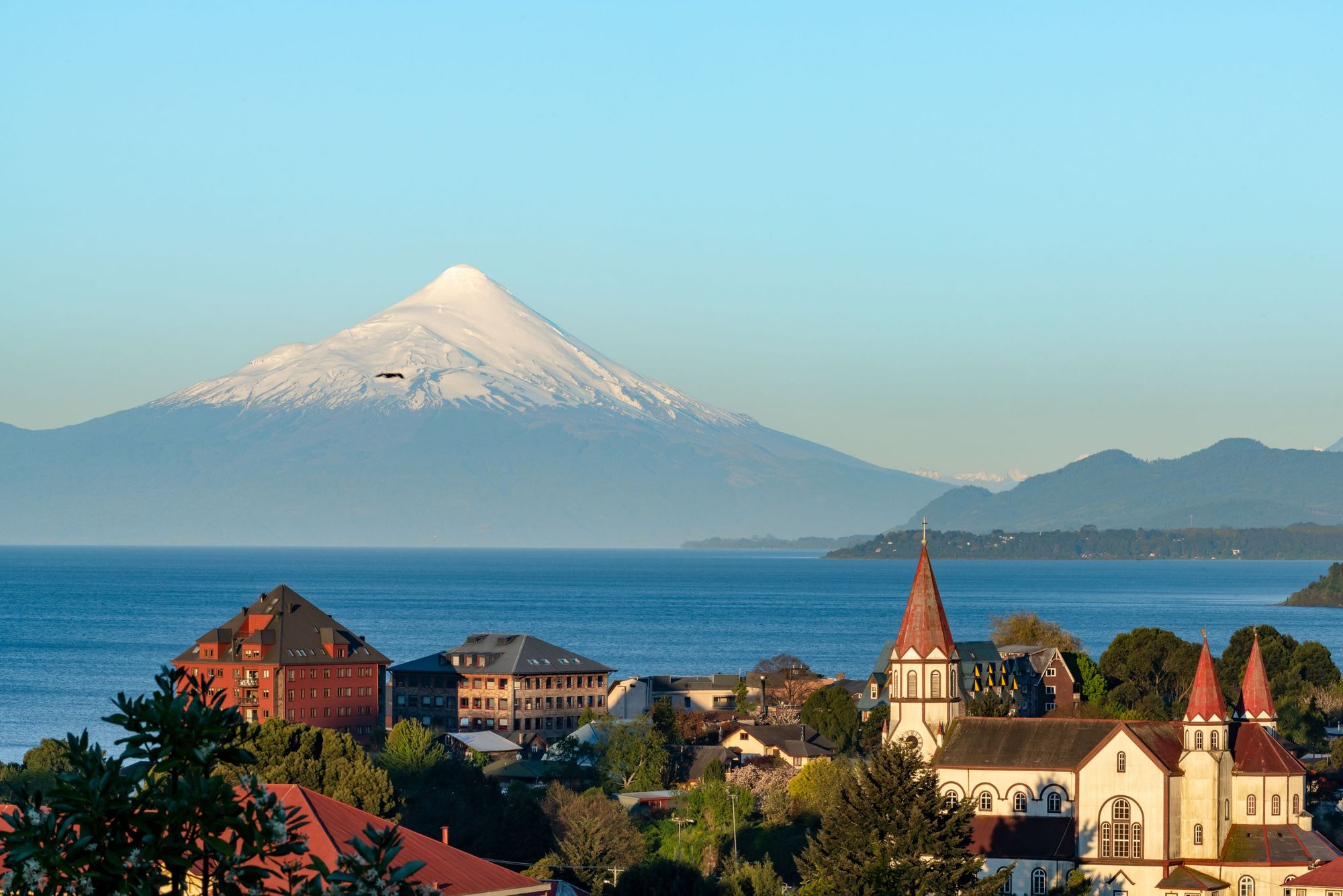
This isn’t just an act of goodwill, it’s also meeting consumer demand.
“Travellers today want to be involved," Di Biase note, "and it creates thousands of ambassadors for the area." It's the specific type of tourism Patagonia needs.
"We don’t need trips with a group size of 45 people coming here in buses, moving all the time," Di Biase says. "Rather than coming to South America for 15 days and visiting 15 regions, visit one for 10 days and the economic impact will really be felt by the local community. This is a fragile area. We need small groups, staying longer - and we’re finding that people want to explore like this now.”

Salmon farming and agriculture are the largest employers here, but Di Biase is hoping that will change. “There are a lot of opportunities now for young and local people now, which gives people a reason to stay in the region - not move away,” he says. “At the moment, tourism is the third biggest employer. Perhaps in five years time it will be the top one. The real difference [between tourism and farming] is that we can really have a positive impact on the environment.”
Just like in Parque Patagonia Argentina, the rise of a tourist economy here is not just prospering from the vibrant local biodiversity - it’s dependent on it.
Back in Argentina, I stroll along a wetland restored by Rewilding Argentina with Sebastián Di Martino, the Conservation Director of the foundation. Austral flamingos and rails shuffle around in the reeds, while the water is home to copyu and the sun-drenched cliffs to Wolffsohn's viscachas - an adorable rabbit-squirrel type animal with a comically wise, suspicious look to it.
“When the Europeans came, we started to lose our big species of birds and mammals," says Di Martino. "What we’re trying to do is reverse the wildlife extinction crisis, by restoring complete and fully-functioning ecosystems.”
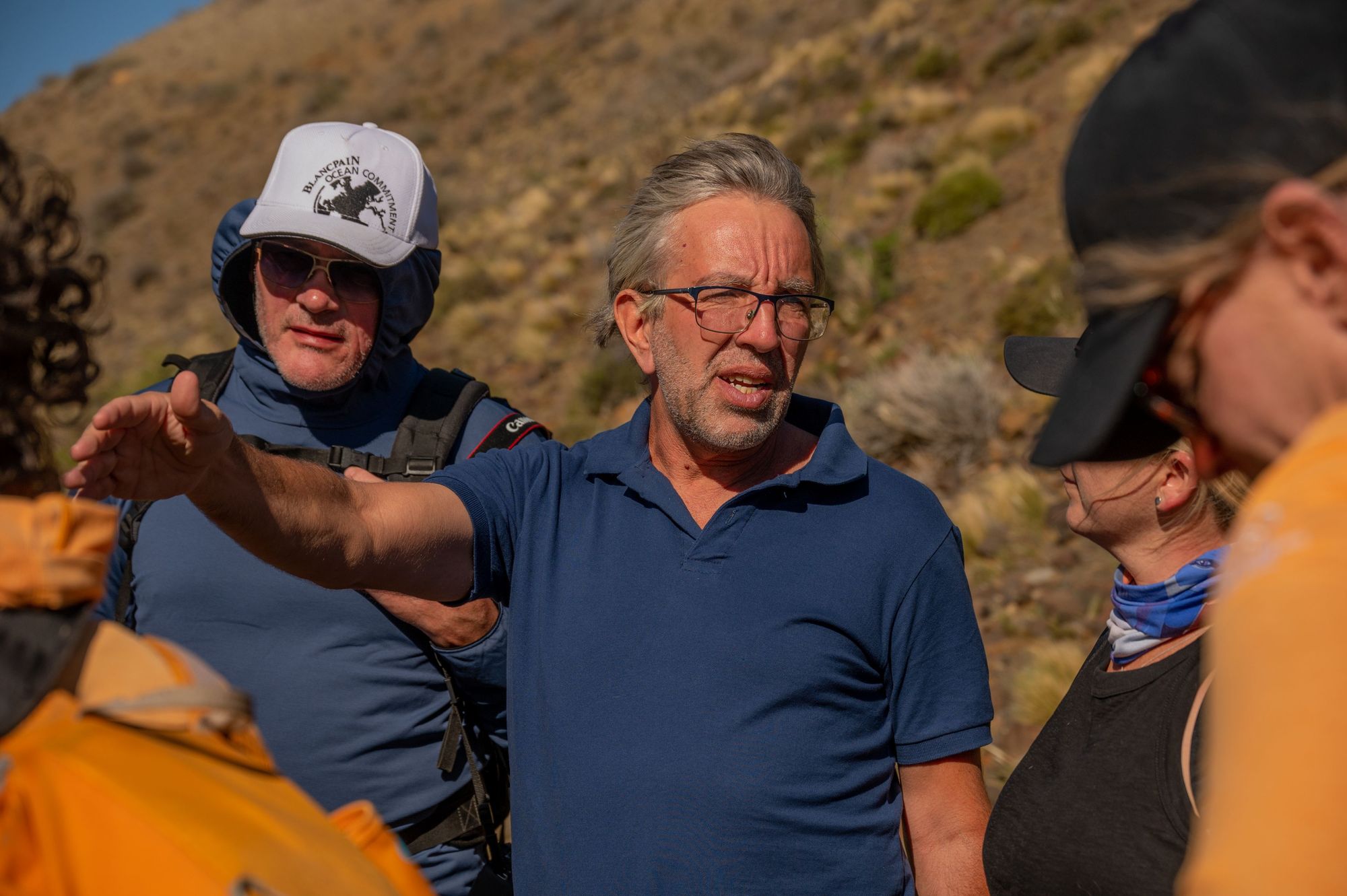
The pumas here are keystone species, Sebastián explains. They regulate the number of guanacos, which prevents overgrazing, and provides carrion for the Andean condors. They also control grey fox numbers, which gives small birds and mammals the chance to repopulate. “When the puma is not there, all of these relationships are lost, and the ecosystem degrades."
This work is reliant, though, on “local restorative economies that coexist, and need, this fully-functioning ecosystem; with local entrepreneurs and nature-based tourism, based on wildlife watching,” Sebastián says.

“That’s our model. Ranchers have a ranch. We have a park, and we don’t produce sheep or wheat, we produce wildlife. The ones that harvest the benefits of that are local people - like Facundo guiding visitors, or those who sell handicrafts, or host guests, or cook the meals.”
We join Claudio Figueroa, another local guide of ranching stock, for a tour to Alero Charcamata - a hidden site of cave paintings, less well-known than the Cave of the Hands.
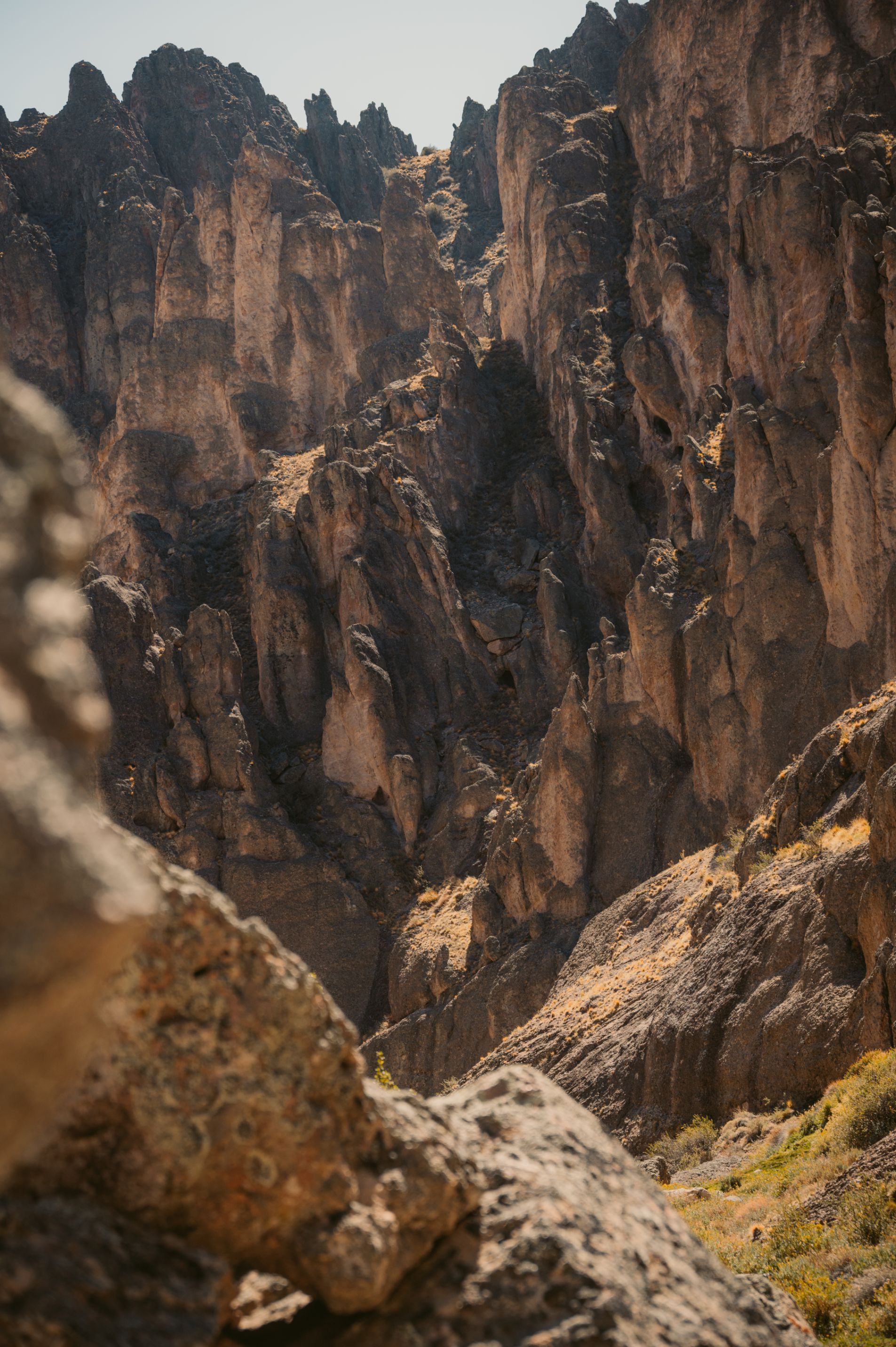
The ranching heritage here reaches back to the late 1800s - beginning after the indigenous people were killed in the genocidal Desert Conquests, a harrowing Argentinian military campaign aimed at conquering Patagonia in the 1870s.
Wool was a prosperous line of work for a while, until the synthetic industry took off. Then, ranchers struggled in the market, and in 1991, the Hudson Volcano erupted, covering the province in ash. Livestock were killed and equipment was destroyed. After that, most ranchers packed up and moved to the city.
“The reality is that most ranches here are empty now, or being mined,” Claudio explains.
We hike along a stream, with towering canyon walls on either side, before reaching a rocky overhang, where ancient hand-paintings and images of pumas and guanacos line the walls. The paint, we're told, was made from a blend of urine, blood, water and blood, and likely sprayed onto the wall through a guanaco bone by nomadic hunter-gatherers, around 5000 years ago.
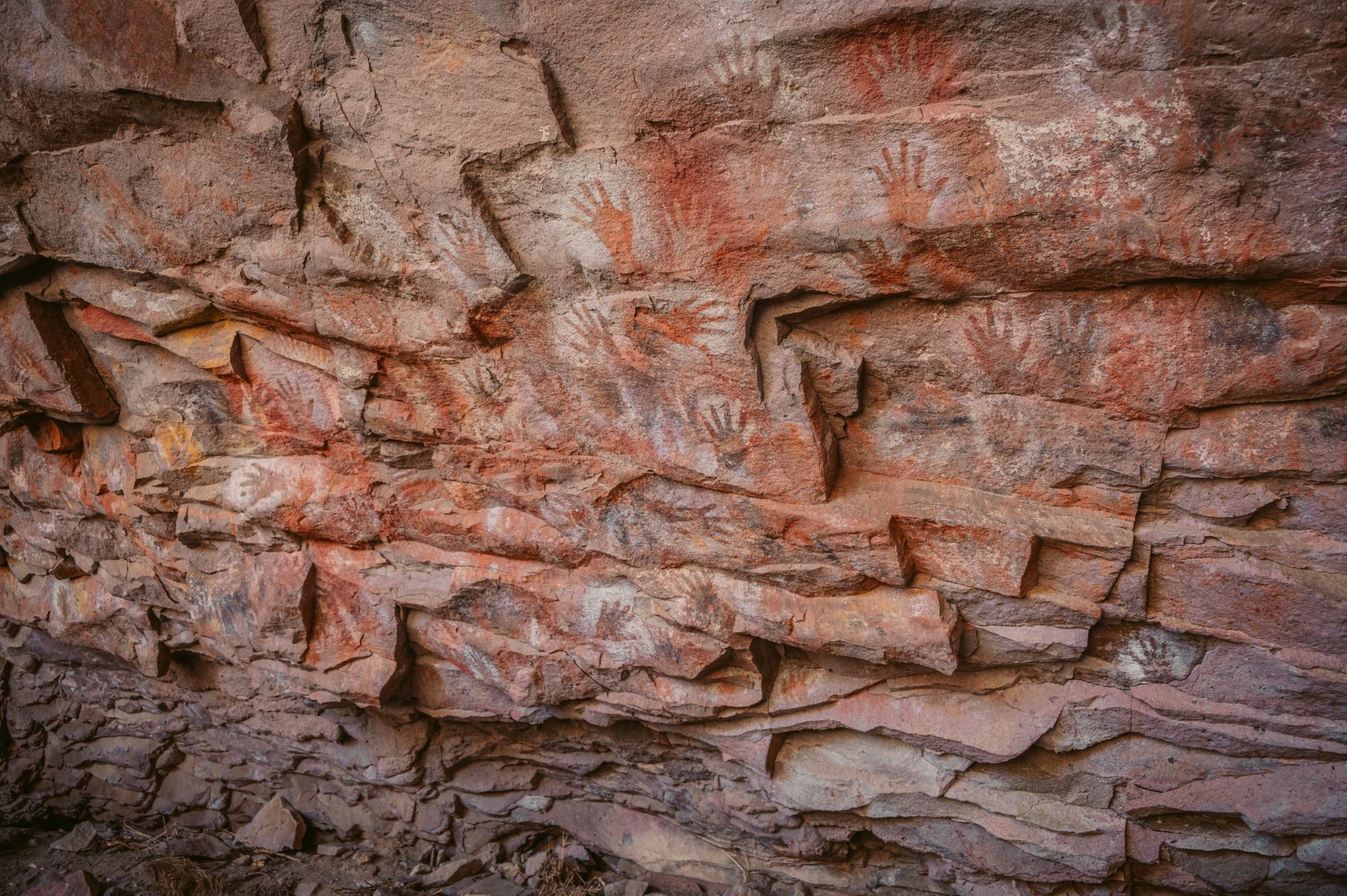
“Most people just don’t know about this place,” Figueroa says. “For me, it is a passion.” Sure enough, there’s no tourist infrastructure here at all and we have the whole canyon to ourselves, despite the global significance of the place.
Di Martino hopes that tours like Figuero’s and Epul’s can be the future here.
“In Iberá, another one of our projects [in northeast Argentina], wildlife watching is now the main economy. The same people who killed jaguars 70 years ago want them back. In these economies, local people can be entrepreneurs rather than having to move to Buenos Aires and work in a job with low pay and low social security. This can be an economy that works for the local people and for nature.”
A fully-functioning ecosystem is returning to this corner of Argentina, and across Patagonia, wildlife tourism is setting in motion.
Inspired? Check out our range of rewilding trips or Patagonian adventures, including a nine-night epic in Chile, with Raffaele Di Biase!

